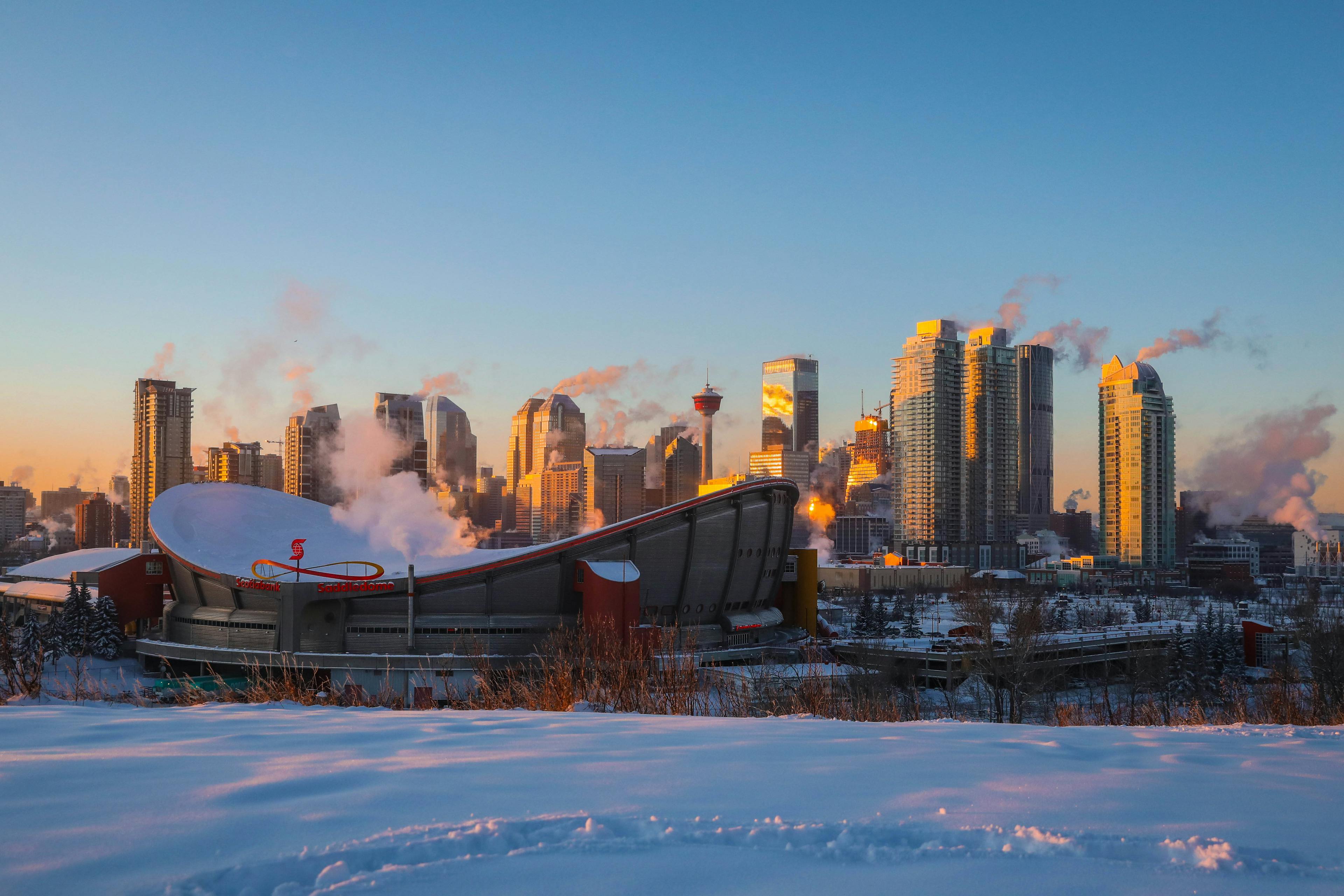Calgary doesn’t need the Olympics to build a new arena

By Ryan Pike
5 years agoIn just under a month, Calgary will vote on whether or not to bid on the 2026 Winter Olympics. While hosting in 2026 would bring outside cash into the equation, a victory for the “no” side in November’s plebiscite won’t kill the chances for a new home for the Calgary Flames.
How did we get here?
Way, way back in the spring of 2005 – as the National Hockey League’s lockout was dragging onward – the Flames quietly began chatting with stakeholders about potentially building a new home for the hockey team. At the time the then-Pengrowth Saddledome was slightly over 20 years old and the thought process was likely that there was plenty of time in the lease and the lifespan of the building to come to a thoughtful arrangement on a new barn.
That we’re still having this conversation over a decade later speaks to how challenging unforeseen circumstances – both economic and flood-related – can be to a negotiation. But two parallel tracks have seemingly revived hopes for a new building: the ongoing bidding process for the 2026 Winter Olympics and recently revived talks between the Flames and the City regarding a new arena (or “event centre”).
The timing of the revived talks, roughly a month before a Nov. 13 non-binding vote on whether Calgary will bid for the 2026 Olympics, have led to some suspicions that the two are connected. To assuage any confusion: they’re not.
But it’s worth going into a bit of the mechanics about how the arena and the Olympic bid are intertwined, especially given the possibility that either side of the Olympic plebiscite debate could seize on confusion.
Does a successful Olympic bid require a new big arena?
The International Olympic Committee’s Agenda 2020 reforms are aimed at making hosting the Olympics easier (and less costly) for host cities. The main way they’re doing that is by discouraging bid cities from building new stuff explicitly for the Olympics – there’s a cottage industry of Tumblrs devoted to ghost-like photos of decrepit, abandoned venues from recent games, after all.
But the Calgary 2026 bid only includes two new builds – a proposed secondary arena and a field house – with both of them connected to the life-cycle needs of the city’s sports infrastructure; the arena is connected to both the aging of Father David Bauer Arena and the impending demolition of the Stampede Corral, while the field house has been one of the top unfunded municipal projects since 2012.
Building a larger arena would nominally serve the same purpose as the proposed secondary arena, but it would also strengthen the economic case for Calgary’s bid. The biggest money-makers for most winter Olympics are hockey and curling (both men’s and women’s); it makes a ton of sense to have two big arenas (the Saddledome and the new build) instead of just one to maximize ticket revenue. The bid works without a new big barn – the IOC famously has said that the Saddledome is adequate for Olympic needs – but the business case makes a lot more sense with it involved, just as long as it’s not built only for the Olympics.
In short: a new large arena would help the case for the bid, but the bid works without it.
Does the new big arena require a successful Olympic bid?
A successful Olympic bid would see roughly $2 billion of outside cash flow into Calgary to help fund the infrastructure needs of a 2026 Olympics – with funds ear-marked for the proposed secondary arena. Presumably some (or even all) of the ear-marked funds could be diverted to help fund a new Flames barn.
In short: yes, the Olympics could help make things a bit easier financially on both the City and the Flames (and would potentially result in less reliance on loans or a ticket tax).
But also recall that arena negotiations were going pretty well by all accounts before they hit the skids in July 2017, with the impasse arguably as much about philosophical differences as it was about finances. Simply put: there was enough money on the table between the City and the Flames to get a deal done before the Olympics became a possibility, so while having extra cash available definitely helps, it’s not necessary to get a deal done.
In other words: if the Olympic bid dies on the vine due to the Nov. 13 plebiscite, it won’t necessarily halt the momentum of the arena deal. It takes a bit of money off the table, but the construction of a new building will be as much about philosophical fit as it will be about the financial elements of the deal.
Recent articles from Ryan Pike




